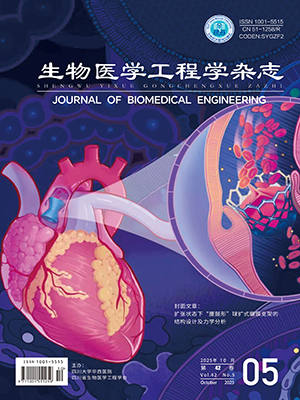| 1. |
Rushinek H, Cohen A, Casap N, et al. The effect of implant-associated factors on the long-term Outcomes of dental implants. Oral Maxil Surg Clin, 2024, 37(1): 51-63.
|
| 2. |
Knapic D, Hassel A W. Electrochemical surface characterization of a femtosecond laser treated and anodized Ti and Ti6Al4V alloy for bone and dental implants meet. ECS Meeting Abstr, 2022, 1: 1007.
|
| 3. |
Xie X, Hu H, Dai Y, et al. Promotion of osseointegration using a titanium oxide nanotube modified biomimetic nano-structured multi-layer implant. J Biomed Nanotechnol, 2023, 19(2): 222-227.
|
| 4. |
Zhu Z, Lin Y, Li L, et al. 3D printing drug-free scaffold with triple-effect combination induced by copper-doped layered double hydroxides for the treatment of bone defects. Acs Appl Mater Inter, 2023, 15(50): 58196-58211.
|
| 5. |
Lukin I, Erezuma I, Desimone M F, et al. Nanomaterial-based drug delivery of immunomodulatory factors for bone and cartilage tissue engineering. Biomater Adv, 2023, 154: 213637.
|
| 6. |
Bins-Ely L, Suzuki D, Magini R, et al. Enhancing the bone healing on electrical stimuli through the dental implant. Comput Method Biomec, 2020, 23(14): 1041-1051.
|
| 7. |
Yoshikawa Y, Sugimoto M, Uemura M, et al. Monophasic pulsed microcurrent of 1-8 Hz increases the number of human dermal fibroblasts. Prog Rehabil Med, 2016, 1: 20160005.
|
| 8. |
Greene J J, Gorelik P, Mazor O, et al. Freeing the animal model: a modular, wirelessly powered, implantable electronic platform. Plast Reconstr Surg, 2023, 153(3): 568e-572e.
|
| 9. |
Kim Y J, Lee J, Hwang J H, et al. High-performing and capacitive-matched triboelectric implants driven by ultrasound. Adv Mater, 2023, 36(2): e2307194.
|
| 10. |
Zheng Q, Zou Y, Zhang Y, et al. Biodegradable triboelectric nanogenerator as a life-time designed implantable power source. Sci Adv, 2016, 2(3): e1501478.
|
| 11. |
Zheng Q, Zhang H, Shi B, et al. In vivo self-powered wireless cardiac monitoring via implantable triboelectric nanogenerator. Acs Nano, 2016, 10(7): 6510-6518.
|
| 12. |
Yu B, Qiao Z, Cui J, et al. A host-coupling bio-nanogenerator for electrically stimulated osteogenesis. Biomaterials, 2021, 276: 120997.
|
| 13. |
Wang C, He G, Zhao H, et al. Enhancing deep-seated melanoma therapy through wearable self-powered microneedle patch. Adv Mater, 2023, 36(11): e2311246.
|
| 14. |
Pettersen E, Shah F A, Ortiz-Catalan M. Enhancing osteoblast survival through pulsed electrical stimulation and implications for osseointegration. Sci Rep, 2021, 11(1): 22416.
|
| 15. |
Yang Y, Lin L, Zhang Y, et al. Self-powered magnetic sensor based on a triboelectric nanogenerator. Acs Nano, 2012, 6(11): 10378-10383.
|
| 16. |
Jiao Pengcheng, Zhang Hao, Li Wentao. Origami tribo-metamaterials with mechanoelectrical multistability. Acs Appl Mater Interfaces, 2023, 15: 2873-2880.
|
| 17. |
Zhang H, Wang S, Zhang J, et al. High-sensitivity piezoresistive sensors based on cellulose handsheets using origami-inspired corrugated structures. Carbohyd Polym, 2023, 328: 121742.
|
| 18. |
Kim D, Park J, Kim Y. Flexible sandwich-structured foldable triboelectric nanogenerator based on paper substrate for eco-friendly electronic devices. Energies, 2022, 15(17): 6236.
|
| 19. |
Bins-Ely L M, Cordero E B, Souza J C M, et al. In vivo electrical application on titanium implants stimulating bone formation. J Periodontal Res, 2017, 52(3): 479-484.
|
| 20. |
Wang Q, Wu M, Xu X, et al. Direct current stimulation for improved osteogenesis of MC3T3 cells using mineralized conductive polyaniline. Acs Biomater Sci Eng, 2021, 7(3): 852-861.
|
| 21. |
Snyder S, DeJulius C, Willits R K. Electrical stimulation increases random migration of human dermal fibroblasts. Ann Biomed Eng, 2017, 45(9): 2049-2060.
|
| 22. |
Xu J, Zhao B, Lin W, et al. Periplaneta americana extract promotes osteoblast differentiation of human alveolar bone marrow mesenchymal stem cells. Oral Dis, 2022, 29(8): 3540-3550.
|
| 23. |
秦启顺, 王兴盛, 徐世红, 等. 中药及其活性成分诱导骨髓间充质干细胞成骨分化相关信号通路的研究进展. 生物医学工程与临床, 2024, 28(6): 884-892.
|
| 24. |
隆宇斌, 王湘斌, 樊基耿, 等. piR-7472影响电压调控钾离子通道促进小鼠成骨细胞分化的机制. 中国组织工程研究, 2025, 29(14): 2868-2874.
|
| 25. |
Huang W, Wu Y, Zhao Y, et al. Down-regulation of hsa-circ-0107593 promotes osteogenic differentiation of hADSCs via miR-20a-5p/SMAD6 signaling. Oral Dis, 2022, 29(8): 3447-3459.
|
| 26. |
Amirahmadi F, Haji Ghasem Kashani M, Nasiri M, et al. Osteogenic effect of electromagnetic fields on stem cells derived from rat bone marrow cultured in osteogenic medium versus conditioned medium in vitro. Cell Tissue Bank, 2022, 24(2): 317-328.
|
| 27. |
Dong K, Zhou W J, Liu Z H. Metformin enhances the osteogenic activity of rat bone marrow mesenchymal stem cells by inhibiting oxidative stress induced by diabetes mellitus: an in vitro and in vivo study. J Periodontal Implant Sci, 2022, 53(1): 54-68.
|
| 28. |
王明娟, 陈晨, 谢海峰. 钛表面绿原酸涂层在高糖环境下的成骨潜能. 口腔生物医学, 2024, 15(6): 322-327.
|
| 29. |
Bhaskar N, Kachappilly M C, Bhushan V, et al. Electrical field stimulated modulation of cell fate of pre-osteoblasts on PVDF/BT/MWCNT based electroactive biomaterials. J Biomed Mater Res A, 2022, 111(3): 340-353.
|
| 30. |
Huang L Z Y, Shaw Z L, Penman R, et al. Cell adhesion, elasticity, and rupture forces guide microbial cell death on nanostructured antimicrobial titanium surfaces. Acs Appl Bio Mater, 2023, 7(1): 344-361.
|
| 31. |
Leelasukseree R, Chouyratchakarn W, Phutiyothin C, et al. Recombinant human secretory leukocyte protease inhibitor (rhSLPI) coated titanium enhanced human osteoblast adhesion and differentiation. Sci Rep, 2023, 13(1): 23013.
|




